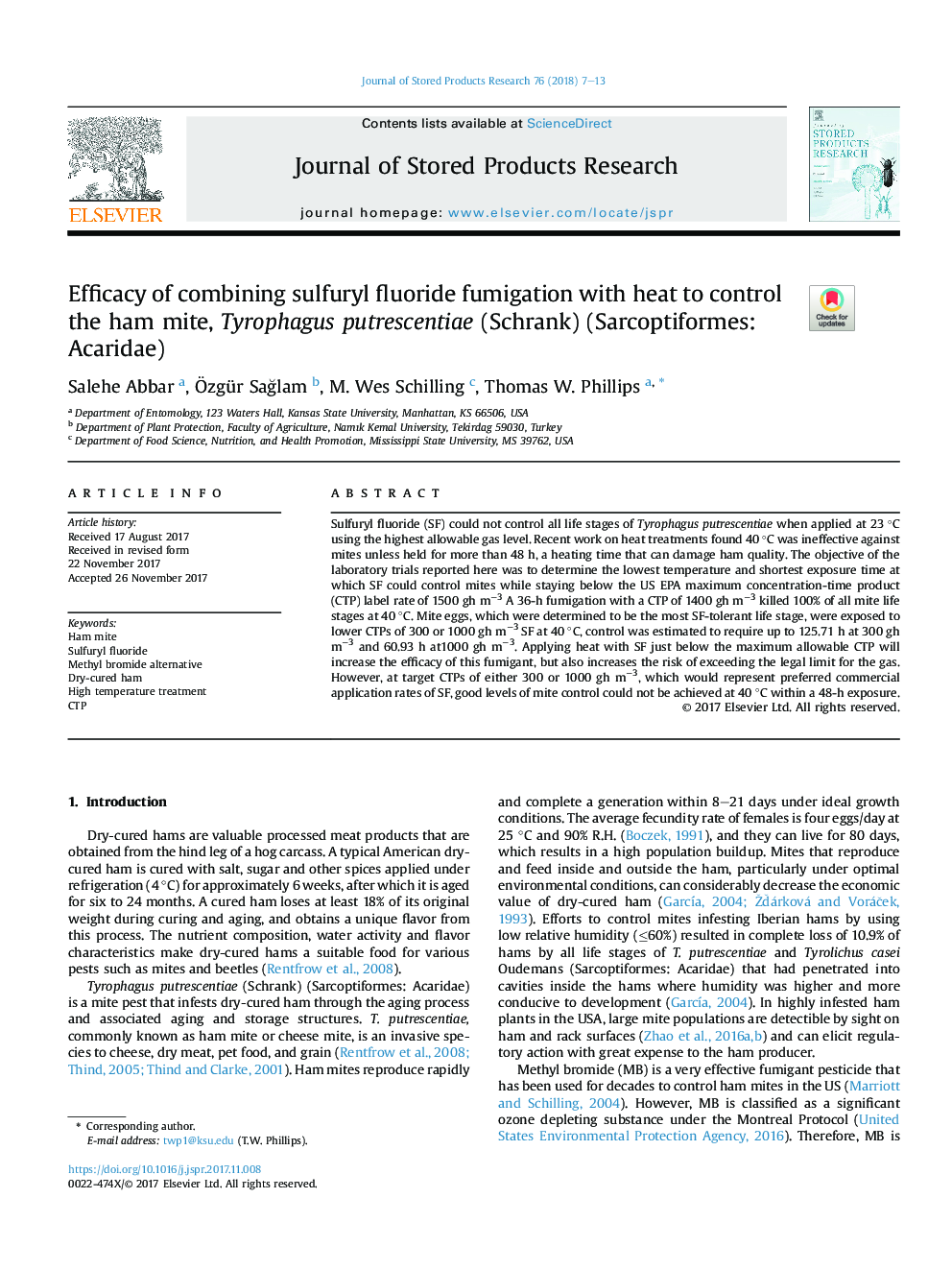| Article ID | Journal | Published Year | Pages | File Type |
|---|---|---|---|---|
| 8881655 | Journal of Stored Products Research | 2018 | 7 Pages |
Abstract
Sulfuryl fluoride (SF) could not control all life stages of Tyrophagus putrescentiae when applied at 23 °C using the highest allowable gas level. Recent work on heat treatments found 40 °C was ineffective against mites unless held for more than 48 h, a heating time that can damage ham quality. The objective of the laboratory trials reported here was to determine the lowest temperature and shortest exposure time at which SF could control mites while staying below the US EPA maximum concentration-time product (CTP) label rate of 1500 gh mâ3 A 36-h fumigation with a CTP of 1400 gh mâ3 killed 100% of all mite life stages at 40 °C. Mite eggs, which were determined to be the most SF-tolerant life stage, were exposed to lower CTPs of 300 or 1000 gh mâ3 SF at 40 °C, control was estimated to require up to 125.71 h at 300 gh mâ3 and 60.93 h at1000 gh mâ3. Applying heat with SF just below the maximum allowable CTP will increase the efficacy of this fumigant, but also increases the risk of exceeding the legal limit for the gas. However, at target CTPs of either 300 or 1000 gh mâ3, which would represent preferred commercial application rates of SF, good levels of mite control could not be achieved at 40 °C within a 48-h exposure.
Related Topics
Life Sciences
Agricultural and Biological Sciences
Agronomy and Crop Science
Authors
Salehe Abbar, Ãzgür SaÄlam, M. Wes Schilling, Thomas W. Phillips,
